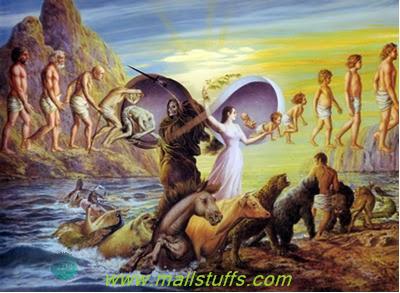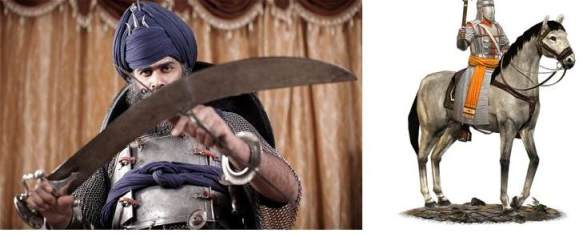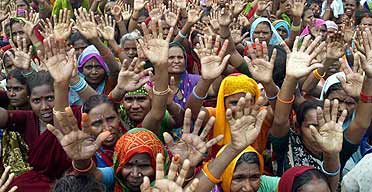
Common questions and myths of caste system
Please read Part-1 and Part-2 on caste system before you read this post
There are many misconceptions, delusion and erroneous belief associated with caste system. In this article, i would be addressing such common questions and myths surrrounding indian caste system Why caste is said to be based on birth?
According to Vedas, Reincarnation is one of the core beliefs in Hinduism; After a soul dies,it is reborn in a new form unless it achieves moksha or salavation.
The concept of reincarnation and karma perfectly justifies the birth based caste system. It favors the notion that lower castes people are themselves to be blamed for their plight due to the bad karma of their previous lives. Their filthy condition is a stern warning to the whole society that the karma ia above all, spares none and favors none. This argument is favoured in many ancient texts, including Bhagavad-Gita, which says people of good karma and detachment indiviual are born in higher caste families. In bhagavad gita, Lord Krishna says that the fourfold caste system was created by him based on karma and triple gunas. Ancient policy makers made fraudulent use of this belief by prescribing different occupational and vocational duties for people of each caste and urged them to follow it like their religious duty and this became the root of all false beliefs, wrong notions and misconception of caste system .

General glimpse of Reincarnation and changes in human body
Can a person change from one caste to another?
According to Vedas, they certainly can but they should be eligible to do so. They should acceptthe basic criteria,rules,regulations and rituals of the converted caste.
According to vedas, conversion happens automatically depending on one karma (deeds). On birth, everyone is treated as a Brahman and then based on his/her karma and education, one becomes a Sudra,Vaishya Kshatriya or Brahmin. completion of this education is said to be his new birth and new caste. In short, an individual caste is not determined by birth, as it is commonly accepted now.
Why hundreds of caste in Hinduism?
Well, the answer is division within each of the four Varnas (caste). This division was termed as sub-caste. So, there are only four castes and numerous sub-castes in Indian society today. The division of caste into various sub-castes was created by broad-minded and arrogant Brahimns & kshatriyas. This is not derived from Vedas or any other ancient scriptures.
It happened due to various types of roles within each of the four Varna’s.
For Ex, A person of vaishya caste can be farmer, trader, moneylender, cow-herder etc. such type of subsequent roles within each of the parent roles gave rise to many other caste. Castes were also created as per the regional location of the group or kingdom. For Ex. Warriors of Rajasthan called themselves of Rajput’s, Warriors of Punjab call themselves as jat’s and so on.
All these group of persons named their sub-caste as per their profession or region which ultimately resulted in more divisions and hundreds of sub-caste in Hinduism.

Jat Warrior(Left), Rajput warrior(Right)
How Social discrimination started between different castes?
Well,in Ramayana and Mahabharata, immense gratitude and respect were shown even to inferior caste people. It is said that many peoples of Sudra and vaishya considered their role as inferior and hence would convert, to either Kshatriya or Brahmins. Kshatriya and Brahmins observed that these were happening on a mass scale and it was leading to the social imbalance of the society since there were not enough efficient shudras and vaishyas to carry out their tasks. Moreover, it was further observed that the peoples converted to brahmins don’t had enough knowledge of Vedas nor they were living ascetic life and hence, not fit to be a Brahmin. Also, the people converted to Kshatriya, didn’t had enough physical and mental strength, ability and courage to be a warrior and hence, not fit to be a Kshatriya. Hence, Brahmins came out with various rules which prohibited conversion across castes. They also came out with rules which can happen due to inter-caste marriages. These were the rules which created social discrimination across peoples of various castes. Some of them were:
1) Person belonging to shudra or vaishya caste were not allowed to marry higher caste people.
2) Person of vaishya caste has limited right to participate and perform certain vedic rituals
3) Person belonging to Sudra caste were prohibited from reading vedas or chants the sacred vedic texts
4) observing any vedic samskaras or rituals was strictly forbidden for person belonging to Sudra caste.
New caste called chandalas were reated to denote untouchables or dalits. Their description is as follows:
The lowest of Sudra, the impure ones were termed chandalas. They were considered untouchables due to their filthy religious practices like sacrifices, black magic and uncivilised habits. They were mostly outcasted and were kept ouside a village/city limits.
 Untouchabales or dalits raising their voice
Untouchabales or dalits raising their voice
Their shadow was treated impure like of ghosts and their sight as a bad omen. So they mostly stayed on the outskirts following their own ideology, unbothered of society, working mostly in the cremation grounds and graveyards or as butchers, hunters, cleaners of human waste and animal carcasses.
How Caste system stayed for many generation?
Against the older ideology, now a days caste system is totally based on birth. Individual inherited caste from his ancestors and pass the same to their children. Individuals are now allowed to change caste provided they are not following Vedic religion. However there are few exceptions where the approval from kings or village heads or the local administrators was taken for caste conversion like in the case of inter-caste marriages where the Brahmins and Kshatriya inherited the caste of their fathers
Vedas is responsible for today caste based discrimination?
vedas just gives an explanation to caste(varna) system
Already a lot have been discussedon why there was need for Varna system. Present caste system is a new concept which never existed before. You will never hear or see anything like Krishna Yadav or Ram Suryavanshi in ancient scriptures. Lord krishna was known as Mayavi, Makhon chor, Ras-Rachaiya etc. Infact he had many names..But he was never idenitfied by his caste as krishna yadav or Krishna vasudeva yadav

Natkhat Lord krishna.
Same was the case with lord rama. Majority of surname that exist today is based on village or city or profession. South Indians have a typical combination of parental name followed by village name. Hardly, any surnames exists which was carried since the inception of Vedas.
In fact, use of surnames were discouraged by ancient society. This also implies that people were respected for their merits and talents, not for their birth. no citizen had something like a caste certificates to apply for jobs as it is happening today. So a person was recognised for his karma and talents. Of course, some political motives did violated the caste system. Today, even the Politics and film industry(Bollywood) have become birth based. similar factors created the irrational caste system we see today.The present surname based caste system is the gift of europe to India. It started when indians traded with Europe through Arab route.
Upper-castes contributes more than lower-caste?
It's just a myth and If this was true, then no way we would have been servants of foreign ruler for centuries.
Rajputs declare themselves as courageous and brave but in reality, they were the first to serve Mughal kings. Not only that they even joined hands with Mughal kings to defeat Indians kings like chhatrapati shivaji. such foolish rajputs were following Mughal king's order to fight against their own countrymen. Shivaji fought most of the battles against such Rajputs who cheated against the nation. A lower caste warrior is a much better contributer than a powerful Kshatriya warrior ass-licking foreign rulers. Because of such warriors, less talented and brave Englishmen ruled india for almost two centuries because they rejected the discrimination based indian caste system. In conclusion, Upper caste Indians are liable for keeping Indian citizens as slaves for centuries under the British and Mughal rule.

Rajputs in british army
So many rajputs and jats who proudly claim themseleves as upper-castes are in fact Shudras or Slaves as per their deeds!
Now what's done is done and nothing much can be done about it. But the present generation should stop identifying themselves of any caste. one should Stop cursing any Shudra,Vaishya, Kshatriya or Brahmin for the things happened in past. success of the future generation will depend on how they refuse to accept any person by his caste.
So reject every rituals, every texts, and every institution which adhere to birth based caste system. This will be the first step in making india the well-developed democratic country
Note: Images used on this website
are either a production of Bhaktivedanta Book Trust(https://www.krishna.com), Iskcon
Foundation or were found in google search under "Free to use and share". If any
of the images presented here violates copyright issues or infringes anyone copyright
or are not under "Fair use", then please bring it to our notice. Read
Disclaimer for more.
Share this to your friends. One of your friend is
waiting for your share.
Related Articles
Bhagavad Gita Poetic Translation-Text 2
Visit to isckon temple
Why Lord krishna had more than 16000 wives
Ill effects of caste system
Fall and Rise of river saraswati-India most sacred river
What is hinduism-An overview
Vedas Quotes Against Present Caste System
Why gayatri mantra is the most powerful mantra
Caste system in modern india
Common questions and myths of caste system
Post Comment